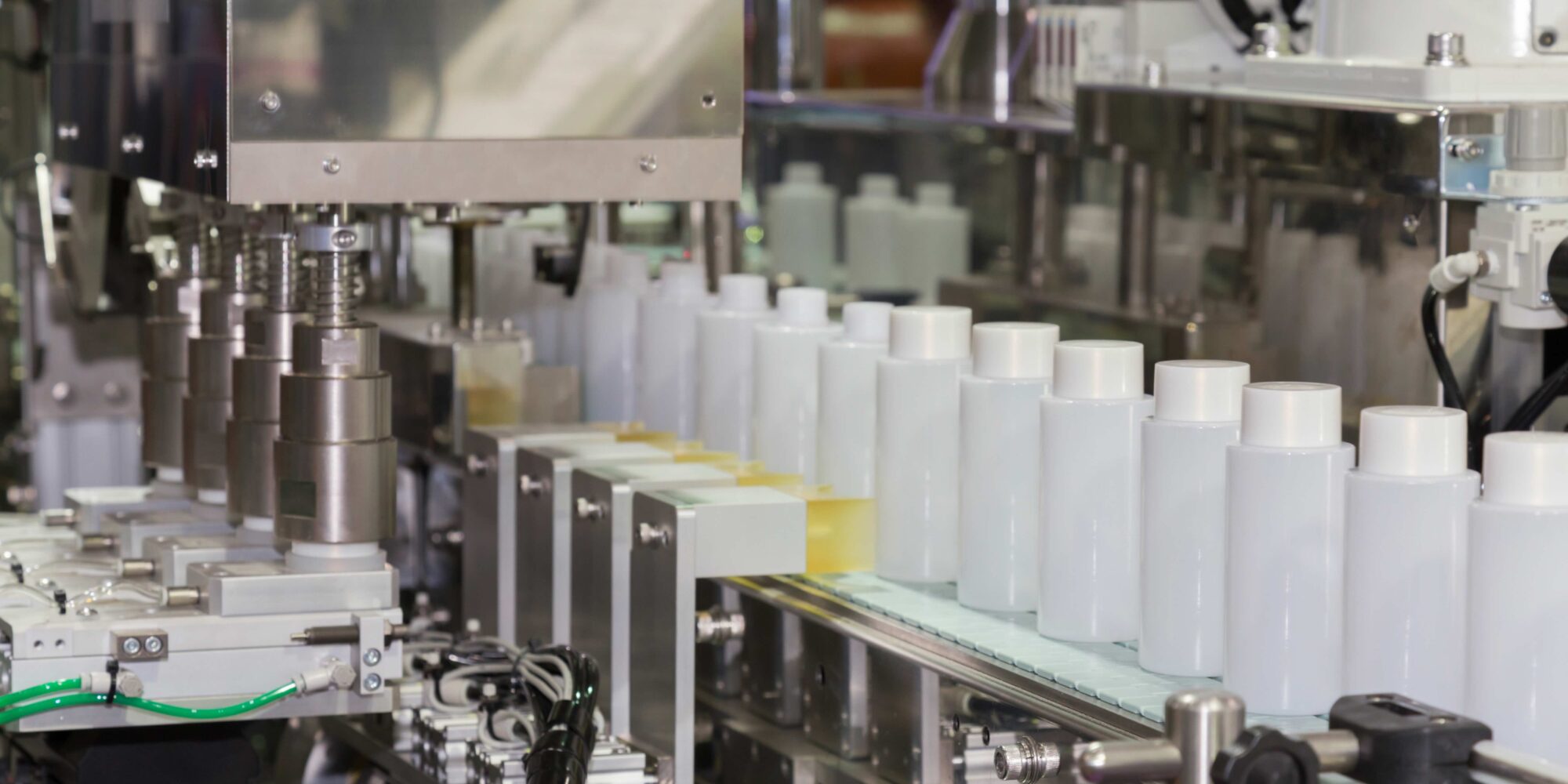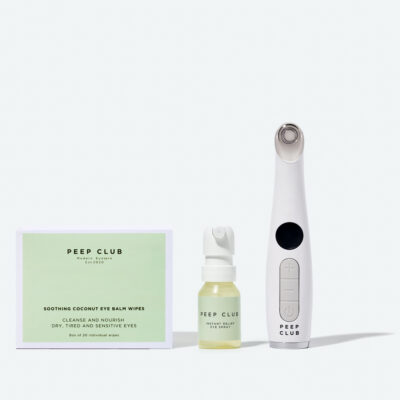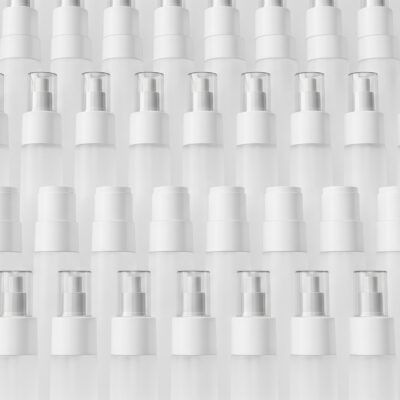
In The AI Age, What Does The Beauty Factory Of The Future Look Like?
As artificial intelligence rapidly infiltrates every level of beauty, from ingredient sourcing to marketing, we want to explore how it—and other forces changing the industry—are impacting production. So, for the latest edition of our ongoing series posing questions relevant to indie beauty, we asked 11 beauty manufacturing executives the following: How will beauty factories be different a year from today? What about five years from today?
- Daniel Wolfe SVP of Business Development, Cosmopak
AI is already transforming the way beauty suppliers operate. In manufacturing, AI-powered optical systems are being deployed for quality control, decoration alignment and assembly. AI systems today excel at analyzing visual data, though AI is still evolving in areas like creative generation.
Looking ahead, we expect AI to increasingly support the design and engineering process, eventually generating things like technical drawings, mold specs and estimated pricing from conceptual inputs to decreasing custom development time and cost. At Cosmopak, we’re actively developing an AI-powered tool that compiles stock molds into a text-searchable database, reducing the time it takes to identify viable packaging options.
On the operations side, AI will soon play a role in production planning and dynamic pricing by analyzing real-time capacity and demand data. Over the next five to 10 years, we anticipate AI-driven robotics taking over more replicable manual tasks, enabling more flexible, scalable automation than is possible today.
This evolution will reshape workforce requirements and how fast beauty products reach market, especially in high labor cost manufacturing markets. Cosmopak’s focus on speed to market will incorporate these tools to enhance the offering to the marketplace.
- Fred Khoury President, Above Rinaldi Labs
Within the coming year, we anticipate a rapid acceleration in the adoption of AI-driven tools across key areas of manufacturing. From AI-assisted formulation that expedites research and development to automated compliance screening that keeps pace with a fast-changing regulatory landscape, these technologies will free our teams to focus more on innovation, problem solving and strategic growth.
At the same time, the shift toward greater agility on the factory floor will become even more critical. As demand for smaller, more frequent product launches such as celeb and influencer collaborations and limited editions continues to rise, manufacturers must evolve. We're investing in modular production systems and streamlined, cross-functional teams designed to respond quickly to shifting market needs.
Looking ahead five years, we anticipate transformative changes that will fundamentally reshape how beauty products are made and delivered. Personalization at scale will become a reality. Advances in technology will enable customized production runs tailored to individual consumer needs while maintaining regulatory compliance and manufacturing efficiency.
AI-powered demand forecasting will allow for intelligent manufacturing that minimizes overproduction, improves resource allocation and drives more sustainable supply chains. The concept of ownership in formulation IP will evolve. ARL is actively developing models that allow brand founders to build equity in their formulas through transparent licensing structures and production volume commitments. These deeper partnerships will help brands scale with confidence and security.
The manufacturing workforce will transform as well. The future will require professionals who can manage complex data, optimize AI-informed systems and deliver highly technical service. We're committed to upskilling our teams and helping lead this shift.
In essence, ARL is building a factory model that is agile, intelligent, collaborative and driven by innovation at every stage of the product life cycle, from concept through commercialization. We’re proud to be ahead of the curve, serving as a model for how manufacturers can embrace these changes with intention and integrity. The future isn’t just coming, it’s being built right now inside our labs.
- Tish Poling President and Chief Development Officer, International Products Group
IPG has had the benefit over the past year to step into the AI world of product development and manufacturing. We look at it as our team of product developers and marketers are the EQ (emotional quotient) of brand and product development, and AI is the IQ when it comes to being more efficient at bringing brands and products to life.
Our team has started incorporating AI to handle the daily grind (excel spreadsheets, pulling regulatory docs, finding raw material backup suppliers, informing us of ingredient synergies in formulation, giving us social media data and reviews, telling us what’s new, what’s being sold, and what’s next) so that our creative team can focus on invention, innovation, design and aesthetics and, most importantly, our client relationships.
A year from now, AI will be deeply integrated into our personal care manufacturing facilities. It will help to streamline operations, enhance product quality and boost efficiency. I believe we will get smarter as we go into production and be able to optimize the entire manufacturing process.
There will be real-time monitoring for our mixing speeds, temperatures, viscosity, etc. We will be able to adjust processes on the fly to maintain consistency and reduce batch failures. I believe that AI will predict equipment breakdowns before they happen, reducing costly downtime of our machinery. We will be able to utilize a process making it faster from product brief to batch. No more developing four to six versions of a product before it is approved.
Five years from now, the beauty industry will make a dramatic shift towards becoming much more efficient and smarter overall. I envision cameras with AI that will inspect packaging, labels and even product texture or fill levels for defects at lightning speed. I believe AI will help dramatically in our micro lab using rapid screening to detect microbial contamination faster than our traditional lab methods.
I imagine robotics and automation will be assisting with moving pallets around the production floor as well as transporting raw materials through the facility, reducing labor strain and improving safety and efficiency. I foresee our entire industry will shift from intuition and experience to intelligence and efficiency.
There will be an honest breakdown of labor between humans and AI. Only humans know when something feels premium, cool and on-brand or when it feels “off.” AI can give us 100 ideas, but we ultimately decide which ideas are worth betting your brand on.
Our emotional intelligence and storytelling will never be replaced by AI as we know how to tell a founder story, craft a message, pitch Sephora and build trust with our clients. We will still be having formulation meetings, conducting supplier negotiations and developing influencer partnerships.
And, finally, we will still be the owners of the overall product and brand vision. AI doesn’t know why their brand matters. That’s our magic. Beauty isn’t just about what works. It’s about what moves you to buy it over and over again. Through data, AI gives us clarity and speed, but it doesn’t feel. It doesn’t dream. That is still our job. It’s intuition, empathy and desire. These are the things that data can’t measure and never will!
We will harness AI to make us sharper, but it’s emotional intelligence and our human touch that makes the difference between a product and a ritual. Beauty brand founders will still lead with creativity and vision, but companies who embrace and use AI will make faster, smarter and more profitable decisions across formulation, marketing and sustainability.
- James Hart Chief of Staff, Merit Manufacturing
The best way to understand how artificial intelligence is going to affect our industry as a manufacturer is to look at the impact it’s having on a more flexible industry like marketing and to ask ourselves what the root cause of that change is.
If we look at social media marketing today, AI tools are used to generate countless iterations of creative content and test them quickly. This strategy removes the human bias and creates the broadest possible base in order to get at the most important question, what do customers really want?
Artificial intelligence is removing human limitations in order to gather the best data and better determine where customers are actually headed. The personal care industry is simultaneously experiencing its own revolution. Three major trends are converging to create the perfect storm for AI adoption:
Traditional broad-appeal products are being replaced by hyper-personalized solutions. Consumers, particularly gen Z and millennials, are demanding products tailored to their specific skin types, hair textures and lifestyle needs.
For some product categories and customer demographics, brand loyalty will continue to erode as customization allows customers to have more control over the product they want. This shift is already evident in skincare, haircare and fragrance.
Applying AI Strategy To Beauty Manufacturing
So, how do we apply that same idea in beauty and manufacturing? Iteration, customization and agility.
What’s going to differentiate manufacturers in the next five years is going to be who can figure out how to support brands as they test more products, quickly. The most successful manufacturers will be those who can:
Enable Rapid Prototyping: AI-powered formulation platforms can test thousands of ingredient combinations virtually before a single physical sample is created. This dramatically reduces the time from concept to market testing.
Support Micro-Batch Production: Instead of massive production runs, manufacturers need to support smaller, more targeted batches that can respond to real-time market data and consumer feedback.
Integrate Predictive Analytics: Manufacturers who can help brands forecast which products will succeed based on early market signals will become indispensable partners.
The manufacturers who will thrive in this new landscape are those who can support brands in three critical areas:
Speed To Market: The ability to move from formulation to finished product in weeks rather than months, enabling brands to capitalize on trend cycles that are increasingly short-lived.
Data Integration: Manufacturing systems that can integrate consumer data, market trends and production capabilities to optimize both product development and supply chain decisions.
Flexible Production: The infrastructure to handle both large-scale production for proven products and small-batch runs for testing and customization. Factories who can develop and launch product variants quickly in order to capitalize on shifting market data and trends in near real time will be the most sought-after manufacturers for emerging brands.
- David Gobeli Founder and Lead Formulator, Lab Magenta
As someone actively building a beauty and skincare factory from the ground up right now, I can say the future is already knocking. I’m leaning heavily on AI, not in a distant or abstract way, but daily for sourcing hard-to-find ingredients, comparing product benchmarks, reaching out to potential brand partners, managing communication and brainstorming marketing that would have otherwise taken a team of specialists or hours of time.
In this transition from formulator to incubator contract manufacturer, I have to make decisions based on impact and efficiency. It's not about flashy tools or expensive agencies, it’s about using AI creatively and consistently. That’s allowing me to move faster, stay lean and reduce the number of traditional support roles. Most of my hiring is now focused on hands-on production staff because AI is covering so much of the back end.
Looking ahead a year, I see more indie and mid-sized manufacturers leaning into hyper-efficiency, streamlining development timelines, tightening up communication loops and accelerating speed-to-market for smaller brands.
In five years, for factories like mine built to support emerging, values-driven brands, I see a shift toward nimble, small-batch manufacturing that prioritizes personalization, low MOQs and fast pivots. These factories won’t be defined by massive machinery or scale, but by modular systems, creative use of technology and tight collaboration between makers and founders.
Sustainability will also be baked into the foundation, not just in terms of materials, but in how we minimize waste by only producing what’s needed, when it’s needed. The most successful factories will be those that operate more like labs or studios: flexible, experimental, collaborative and always evolving.
- Kate Duffy VP of Research and Development, Elevation Labs
Beauty factories are on the brink of a smart shift. Over the next year, automation and AI will move from buzzwords to everyday tools driving faster development cycles, smarter regulatory workflows and seamless quality and granular traceability. At Elevation Labs, we’re investing in platforms like Worldover and Potion AI helping us deliver greater speed, precision and flexibility for our brand partners.
But automation isn’t about replacing people, it’s about enabling them. By taking repetitive tasks off the table, our goal is to free up our teams to focus on creativity, innovation and deepening their knowledge in new product formats. In a year, this will translate to more agile and personalized collaboration between brands and manufacturers.
Looking five years ahead, I expect beauty factories to look fundamentally different. Automation will be deeply embedded across our value chain, but human ingenuity will remain at the core. We’ll see faster product lifecycles, more tailored manufacturing experiences and an even greater ability to support the kind of innovation today’s beauty consumers crave.
- Megan Cox Founder, Innacos Labs
For right now, we see more and more clients using NLPs like ChatGPT and Claude for formula and ingredient ideation, innovation and inspiration as well as sourcing or sustainability queries, but these models are quite limited in what they can offer.
The ideas tend to be repetitive, and the concepts may be infeasible or unrealistic. True innovation comes from deep experience, even within a very narrow scope, and identification of a missing experience, outcome or demographic. NLPs are only a tool to further enhance your own cognition and creativity, not replace it.
For that reason, we are seeing an uptick in scope of ideas presented to us, but also a polarity in clients. They either trust their NLPs and Google, heavily degraded by its new AI search, which spits out utter nonsense more often than the original algorithm ever did, solely, or they rely more heavily than ever on chemists' expertise. It truly depends whether or not the client realizes the limitations of NLPs/AI as to how they'll proceed.
What cannot be changed is the material fact that manufacturing happens in the real world by real people in real time. It takes time. It can never be instant. We cannot infinitely rearrange materials, packaging and production like we can digital assets. Increasingly, marrying the immediacy of our digital world to the reality of a physical world can be a challenge. My perspective is that we are losing perspective.
One benefit I can note is that, due to the use of NLPS and AI, clients know that nearly everyone now has the competitive advantage of enhancing their cognitive abilities with one, so they have slowed down their demands for rapid, unsustainable product development. Brands are generally developing and launching more niche products slower than I've ever seen in the last decade.
Customization and personalization of beauty have long been a goal, with very rare and low-quality results. Many brands will push for personalization, knowing that near unlimited data and methods of data collection are at their fingertips, but most will struggle to find a meaningful way to marry the manufacturing and chemistry to the data to result in meaningful personalization.
On the regulation side, I don't expect much movement. Everyone had quite high expectations with the funding of MoCRA in 2022, but we've seen little progress to date except recent reduction in personnel at the FDA due to mass layoffs.
- Anushka Nadkarni Product Development and Innovation Lead, Bentley Labs
Year from Today (2026): Responsive, Data-Aware, Eco-Accountable Factories
- AI And Automation: Practical, Not Futuristic
- AI-powered production planning will optimize batch sizes, reduce downtime and predict equipment failure.
- Machine vision systems will increasingly handle fill line QA, label accuracy and color/texture consistency.
- AI will also assist in forecasting ingredient needs and managing supply chain volatility.
- Personalization: Early Integration
- Factories will begin supporting modular base formulations that can be finished or customized at a final step (either in-house or in-market).
- On-demand kits or made-for-you SKUs will be produced via batch splitting—e.g., same serum base with customized actives or fragrance.
- Speed To Market: Formula-to-Shelf Compression
- Faster tech transfer from formulation labs to production floor via digital formulation libraries, reducing lag time from months to weeks.
- Accelerated stability testing using AI simulation to model real-time product behavior, speeding up pre-market checks.
- Personnel Shifts: Tech-Hybrid Roles Rise
- Operators will increasingly need data literacy: managing digital dashboards, running diagnostics, troubleshooting AI co-pilots.
- Less reliance on repetitive manual labor, more on cross-skilled technicians who can interface with machines and ERP systems.
- Compliance: Prepping For Global Standards
- Factories will ramp up systems to comply with eco-certifications like COSMOS or EWG Verified.
- Built-in ingredient traceability software (possibly blockchain-powered) for real-time compliance across countries.
- Product Category Shifts: Demand For Waterless, Solid And Skincare-Hybrid
- Growth in solid bars, powders, concentrates will push factories to invest in dry compounding tech and alternate filling lines.
- Rise of skincare-infused color cosmetics means cross-category production flexibility (e.g., emulsions that also require pigment dispersion capabilities).
Five Years from Today (2030): Intelligent, Regenerative, Human-Centric Manufacturing
- AI & Automation: Fully Integrated Factory OS
- Beauty factories will operate with AI-native “digital twins”—virtual replicas of the entire facility to test changes in formulation, packaging or throughput implementation.
- AI-assisted formulation tweaking in real time based on consumer feedback loops (e.g., reformulating SKUs mid-cycle to meet emerging ingredient preferences).
- Hyper-Personalization At Scale
- Individualized product production using real-time formulation robots capable of mixing, filling and coding products per user profile.
- Integration with consumer-facing diagnostic tools (like skin scans or microbiome tests) to auto-generate production orders.
- Near-Instant Speed To Market
- Use of micro-factories or decentralized manufacturing nodes in major regions to produce and ship locally, reducing lead times from four to six months to under four weeks.
- Factories will operate in concert with AI market-sensing tools, which scan social and retail trends to auto-prioritize which SKUs enter production.
- Personnel: Human-AI Collaboration
- Workforce shifts toward “beauty manufacturing engineers” combining cosmetic chemistry, AI fluency, sustainability and supply chain agility.
- Fewer line workers, more robot wranglers and data translators.
- Compliance: Automated And Predictive
- Real-time ingredient and packaging compliance engines that adapt to evolving regulations (e.g., PFAS bans, allergen disclosures).
- Global product passports will be embedded with QR codes and digital identities to meet transparency expectations.
- Product And Consumer Behavior Evolution
- Health-beauty convergence will push factories to meet stricter nutraceutical or pharma-grade cleanroom standards.
- Consumer expectations will include:
- On-demand refills or re-mixes (using pods, cartridges, or home devices).
- Certified net-zero, traceable and upcycled ingredients—no longer a premium claim, but a baseline requirement.
- Christine Staples CEO, Cohere Beauty
The return of manufacturing to the U.S. will drive sharp growth in demand for both skilled and unskilled labor. At Cohere Beauty, where we specialize in smaller batch, custom product formulation and manufacturing, we’re investing in automation to increase efficiency and redeploy talent toward higher-value work. Robotics and smart machinery help us scale while maintaining quality.
Speed to market isn’t just important, it’s nonnegotiable. AI is already transforming how we operate, from white space analysis and ingredient trend mapping to faster, smarter efficacious formulation, streamlined regulatory documentation and more efficient batching and filling. We’re applying it today and doubling down for the future.
We’re also deepening our role in clinical support, helping brands substantiate claims with real data, an increasingly critical differentiator in crowded categories. The real challenge is balancing speed, quality and efficacy across the full development cycle. At Cohere, that’s where we excel, from first brief to finished goods at the dock.
- David Chung Founder and CEO, iLABS, Morae Packaging and The Rootist
AI has had a tremendous impact on the beauty industry. We view AI as a helping hand to expedite development and support our clients. It is very good at processing large data sets, so the potential to use it for previously difficult tasks is tremendous. If you have a lot of stability and sensory data on your formulas, you can train AI to predict certain outcomes reducing development time.
Most recently, AI was able to answer a question about how proteins fold, a question that researchers have spent decades to answer. This truly justifies that AI will be a cornerstone in the development of new molecules that will reshape the beauty industry over the next decade. From doing competitive market analysis for product development to the nuts and bolts of biomolecular engineering that will find new actives with enhanced efficacy, AI will play a huge role in advancing the industry forward.
It is also exciting to see how AI will benefit consumers in analyzing their individual skin, scalp and hair characteristics and suggest products. The future is uncertain, but very promising.
- Tag Ceder CEO, The Well Labs
Within a year, we will certainly see more automation infiltrating—robots/machines replacing some human labor for mixing, formulation, third-party stability and microbio testing. There are AI-based skincare companies/lines emerging that can analyze the skin under a microscope and then advise upon a skincare product formulation suitable.
Five years from today, I anticipate much further advancements with AI. It is not going away, it is here to stay.
Pros: Speed to market increased—finished products, testing, shipments, regulatory, clinical trials [and] potential expediting of FDA, USPTO trademarks, patents
Cons: Jobs being outsourced/reduction in labor force, potential room for error, AI continuing to misinterpret resumes and declining qualified candidates, potential room for error with FDA, trademark, patents, clinical trials
If you have a question you’d like Beauty Independent to ask beauty manufacturers, please send it to editor@beautyindependent.com.






Leave a Reply
You must be logged in to post a comment.